- from 750,000 to 400,000 years ago (Acheulean and early Clactonian);
- from 400,000 to 200,000 years ago (Acheulean and Middle Clactonian);
- from 200,000 to 40,000 years ago (Acheulean and Final Clactonian, and Mousterian);
- from 40,000 to 12,000 years ago (Upper Paleolithic).
The typology of the sculptures is of bicephalic zooanthropomorphic heads, that is a human head joined at the neck to an animal head (Fig. 9.5).). The heads don’t have necks. In the Upper Paleolithic there are no paintings with representations of this type. The human heads in every phase of the Paleolithic represent the head of the hominids that produced them, even if in some periods there is, in the representation, stylistic deformation due to the fashion of the time. In the Lower Paleolithic the heads of the animals represent herbivorous mammals. From the Mousterian begins also the representation of feline heads, and in the Upper Paleolithic also those of birds.
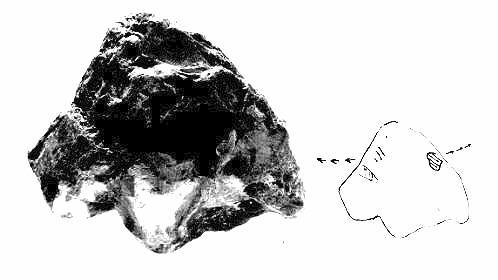
Fig. 9.1) Zooanthropomorphic stone sculpture representing the head of an animal and of a human joined at the neck. The head on the left looks like a lion; the head on the right looks like Homo erectus or a pre-Neanderthal.
Under the two mandibles the flint tapers down to a tip and, holding the sculpture at the two extremities with two fingers, it can be rotated, and every expression is better seen. The sculpture is worked across the whole surface.
Origin: Pescara, Italy.
Dimensions: 2.7 inches in height, 1.5 inches in width.
Material culture: Clactonian or Early or Middle Acheulean.
Collection of the Museum of the Origins of Man.
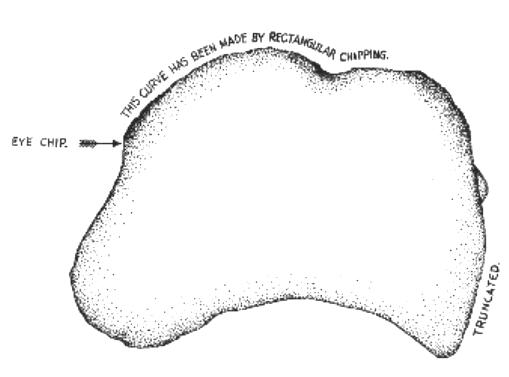
Dimensions: 5.1 inches in length.
Southern England or northern France.
Material culture: probably Clactonian or Middle Acheulean.

The sculpture is in green stone, and has some slight damage from rolling, which is not disfiguring.
Dimensions: 3.9 inches.
Origin: old alluviums of Scrivia river, Tortona, Alessandria, Italy.
Material culture: Clactonian or Middle or Final Acheulean.
Collection of the Museum of the Origins of Man.
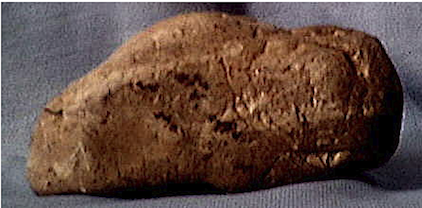
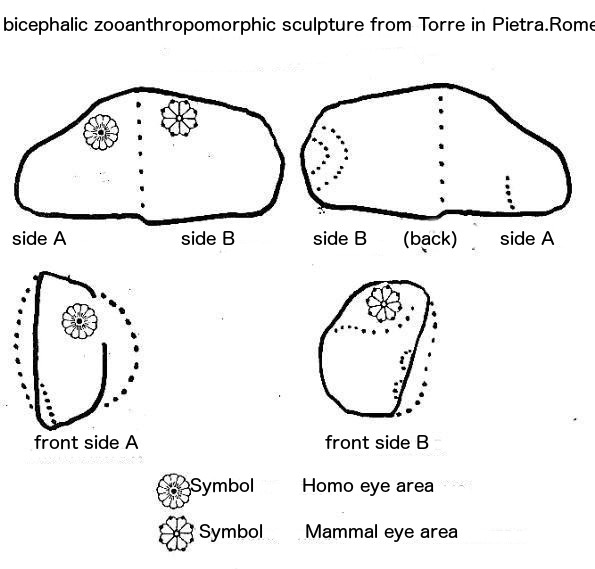
The style is an elongated horizontal type. Despite the stylistic deformation, the head of the hominid can be interpreted as Homo erectus or a pre-Neanderthal.
Length: 4.7 inches; Height: 2.4 inches; Width: 1.8 inches. Weight: one pound.
Origin: Torre in Pietra, Roma, Italy.
Material culture : Acheulean or Middle or Final Clactonian.
See: A bicephalic zooanthropomorphic lithic sculpture of the evolved Acheulean from Roma-Torre in Pietra interpreted through the typology of the sculptures” by P. Gaietto, in Paleolithic Art Magazine, 2001, which also contains an analysis of this sculpture in 22 points, with six photographs of the sculpture from every side.
Collection of the Museum of the Origins of Man.
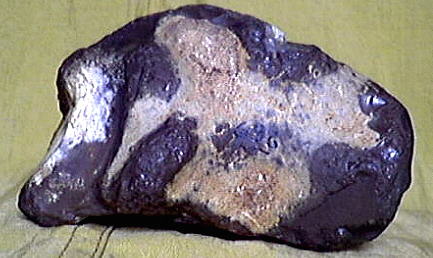
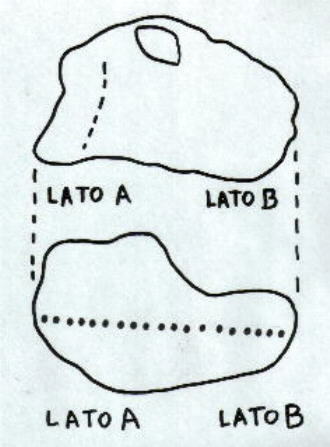
Dimensions: Length: 3.6 inches; height: 2.2 inches; width: 2.1 inches. Weight: 0.6 pound.
Origin: Rodi Garganico, Foggia, Italy.
Collection of the Museum of the Origins of Man.
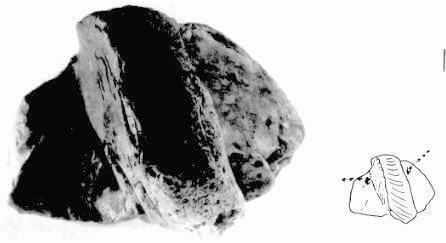
The human head can be attributed to Homo sapiens neanderthalensis through the typology of the head in lateral profile as generally represented in sculpture. The head of the animal has been attributed to the mouflon, or to an ovine or bovine with descending horns. This consideration is based on the representation of the horns between the two heads; in fact, the two heads are worked in every part, and this part of the nodule of flint has been left in relief to precisely represent the horns.
This is a unique type but in the typology of the Paleolithic, its rarity is not a merit, but a defect to investigate. The animal is looking upward.
It is not to exclude that it can be an artistic man-animal hybrid. It is a work that must be studied further.
Dimensions: 2.7 inches.
Origin: Rodi Garganico, Foggia, Italy.
Material culture: Mousterian.
Collection of the Museum of the Origins of Man.
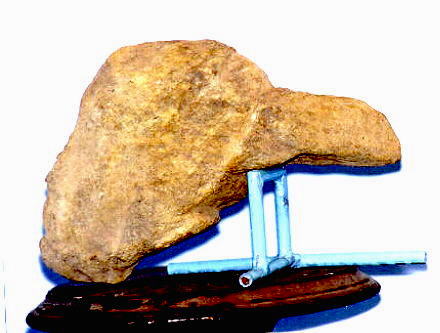
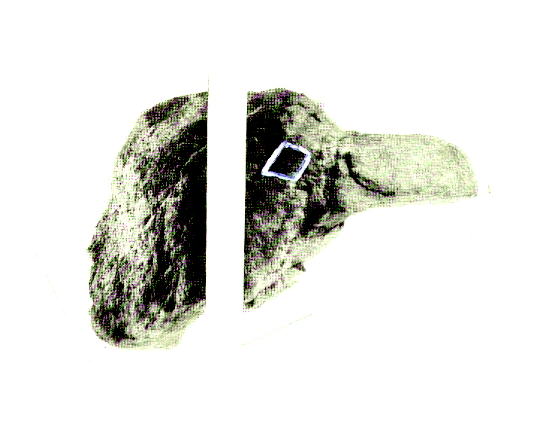
The dimensions of the bird’s head are greater than reality, as they are equal to those of a man, who in turn is represented in smaller dimensions than reality.
The style abolishes the details of the human face, but is realistic in its depiction of the bird’s head. The man looks like a Homo sapiens sapiens, while the bird looks like a seagull, and has an engraved rhomboid eye, which is not seen in the photograph, and for this reason it has been sketched to highlight it. The human head on the opposite side is flat, while that of the bird is worked frontally and on each side, even under the beak.
Length: 11.8 inches.
Origin: Vesima, Genoa, Italy. (Vesima is an Apennine mountain area on the shores of the Mediterranean sea.)
Material culture: Upper Paleolithic.
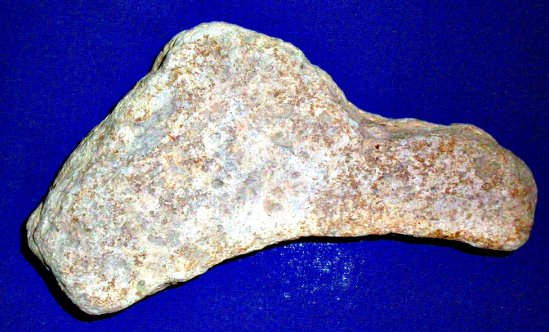
Different styles with different subjects can coexist in a same sculpture.
This stone sculpture exhibits a harmonious composition. It comes from the alluvial deposit of Karaman (Turkey), which is difficult to date, but it could be placed between 60,000 and 30,000 years ago.
In the evolutionary investigation of religions, this type of representation links sculpture in Western civilization with stone sculpture of Neanderthal man native to Europe and the Middle East.
Length: 6.8 inches.
Origin: Karaman alluvial deposit (Turkey).
Pietro Gaietto Collection.
In this Museum of the Origins of Man all the published works of Paleolithic and post-Paleolithic sculptures, paintings, graffiti, engravings, etc.) are part of the spiritual culture of the different peoples.The indication material culture in the caption regards the generic cultural attribution (Lower, Middle or Upper Paleolithic) that includes also the approximate date when there are no absolute dates.
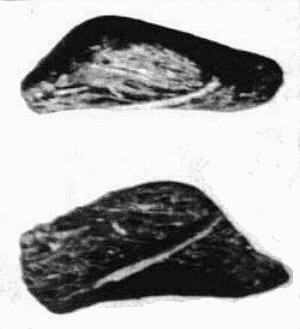
The photo at bottom is the lateral view, while the one on top corresponds to the view from above.
Dimensions: 1.5 inches.
Origin: Cave of the Children, Balzi Rossi, Grimaldi, Imperia, Italy.
Material culture: Upper Paleolithic.
Location: Prehistoric Anthropology Museum (Musée d'Anthropologie préhistorique), Principality of Monaco.
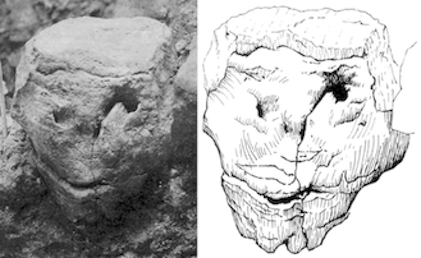
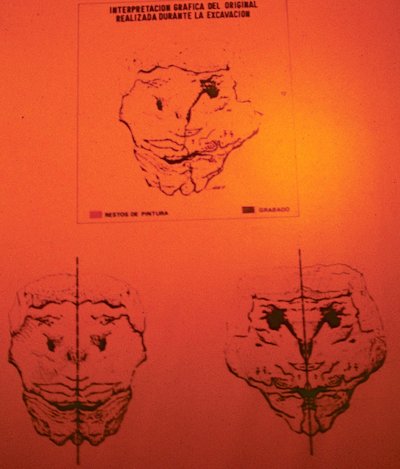
It was discovered in a cave that has remained untouched for millennia. The sculpture was placed in front of an altar with sacrificial offerings, consisting of a square monolith weighing 2,200 pounds intentionally brought into the cave. It is the most ancient temple known with an “idol”, which is this sculpture. This monolith and the sculpture testify to an affinity between the builders of bicephalic sculptures and the builders of anthropomorphic menhirs.
The discovery was made by: Prof. Leslie G. Freeman and Richard G. Klein, anthropologists at the University of Chicago; Prof. J. Gonzalez Echegaray, director of the Altamira Museum and Research Center of Santillana, Spain; and Prof. I. Barandiaran of the University of Santander.
Height: 11.8 inches.
Origin: El Juyo cave, Santander, Spain.
Absolute dating: 14,000 years.
Location: National Museum and Research Center of Altamira, Spain.
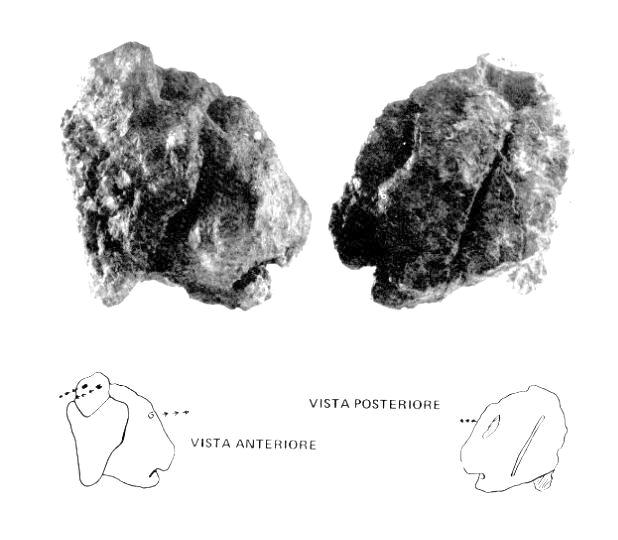
Height: 1.9 inches.
Origin: Palo, San Pietro d’Olba, Savona, Italy.
Material culture: Upper Paleolithic.
Collection of the Museum of the Origins of Man.
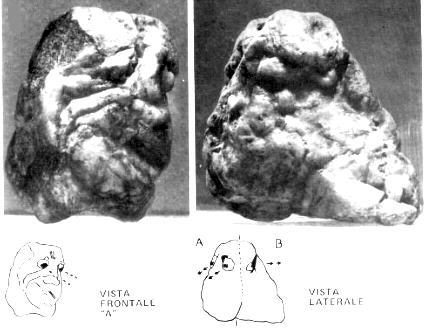
Height: 2.7 inches.
Origin: Vado Ligure, Savona, Italy.
Material culture: Upper Paleolithic.
Collection of the Museum of the Origins of Man.
Copyright©2020 by Museum of the Origins of Man, all rights reserved.